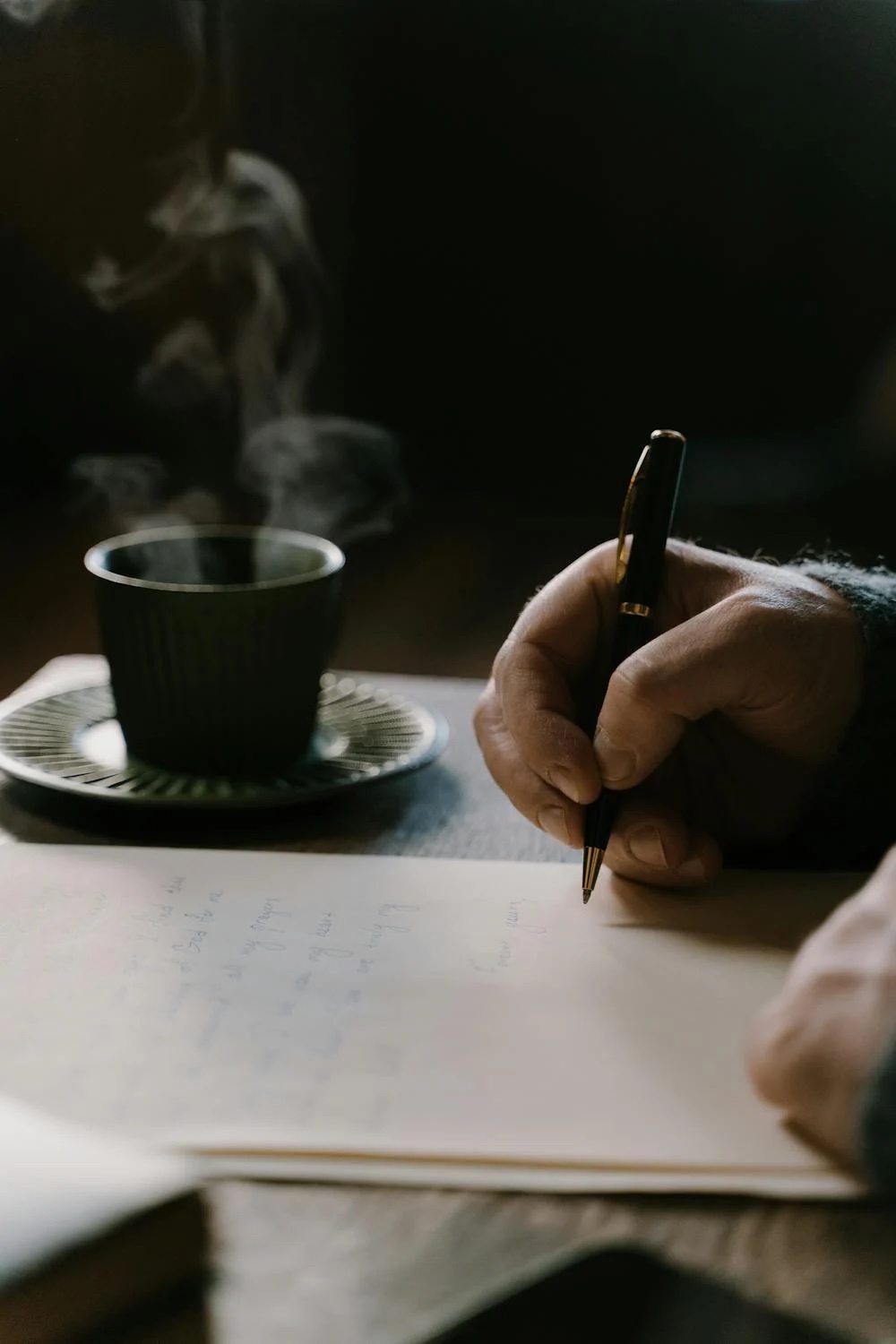
Everyone is the Middle of Something

Transitions are one of the few things we all have in common. Everyone has been through one. Everyone is in the middle of one. Everyone will face another.
Life is shaped by transitions. Some feel seismic — marriage, the birth of a child, the loss of a loved one, a new job, a big move. Others arrive quietly — like a friendship that fades without conflict, or the subtle shift in your perspective after reading a paragraph that resonates something deep within.
You don’t need to have achieved something momentous to be in transition. Sometimes it’s as simple as realizing the way it is no longer fits. That you’re drifting subtly toward something new. Even stillness isn’t static. Your thinking is evolving: sifting and sorting, finding what is now true and discarding what isn’t, and creating new space for what’s ahead.
We Celebrate Beginnings and Endpoints but the Real Work Happens in the Middle

Here’s the truth: We live in a milestone-obsessed culture. We celebrate achievements and have rituals for beginnings and ends. But most of us are just trying to navigate that vast stretch of in-between.
The middle is where the real transformation takes place. In the unremarkable Tuesday afternoons or the quiet realizations that nobody else sees. It’s where we learn to carry grief without dropping everything else, or conversely, where we allow ourselves to cry without restraint. It’s where we adjust our expectations of what love looks like, or where we decide that we want to take a year away from relationships and learn to love ourselves. Maybe it’s in the moment where you realize that grudge is only holding you back, and no one else. And as you let that idea percolate for a while, that grudge unknowingly melts away, bit by bit, because you gave it permission to release one day while doing laundry. These are the moments where we stumble through the slow recalibration of who we are and what matters now.
These moments are sacred in their own right. Transitions are not usually loud. Sometimes transitions are sitting in discomfort without fully solving it. Or deciding you can part with those boxes of your deceased mother’s items that have been taking up space in your house for years. Allowing yourself to let go of holding on is transformational. Even recognition of a transition is a part of the transition.
So why pay attention to transitions if they’re always happening? Because this is the story — the minutiae that comes before a big shift. And by acknowledging it, it makes the waiting, the hard work of all of the little incremental steps less mundane and more important.
Most Transitions Go Unnamed — But They Shape Everything

We are so accustomed to moving through our day, we very likely do not realize the little transitions until one day we catch ourselves responding differently to the same old thing. Like the day you close your teenager’s bedroom door and say nothing about the wreckage within and decide to not be angry, disgusted or disappointed about it. Or you say “no” to a request that would normally take up your time, and instead use that time to do something you really want to do for you.
These are moments that should be celebrated.
Sadly, there’s no ceremony for forgiving someone quietly. No badge for realizing that dream you once chased no longer fits. No applause for the day you thought to yourself, “I’m not going to respond to that old insulting trick.”
Personally, I think all these mini milestones deserve a cupcake.
I think we need more conversations about the middle. About the years that feel like waiting rooms. About the slow reconciliations with ourselves. About the micro-accomplishments — the quiet triumphs nobody sees, like setting a boundary, delegating instead of doing it all, or choosing rest.
These are turning points — and important ones. They are moments of becoming. They happen on the drive home, in the shower, or out walking the dog. These bits of change assemble to make up the mosaic of the in-between.
Even our biology celebrates transitions: our cells renew, our brains literally rewire themselves throughout our lives, our bones break down and rebuild constantly. We can see it as our faces soften and change, our hair thins, or we increase muscle mass after instilling a new form of exercise. Transition is nature’s baseline. It’s not the exception, it’s the rule.
Discomfort Isn’t a Problem — It’s a Signpost
We often confuse the discomfort of transition with a red flag. In reality, it’s often the opposite — it’s proof that something inside you is expanding. That you’ve outgrown a role, a belief, a mindset, or a dated version of yourself clutching old ideals.
When things feel murky, our impulse is to rush toward clarity. There’s a reason for that. Change can feel uncomfortable, even scary. It might feel like a loss. Even good change can stir up grief. That’s unsettling and we, as humans, seek comfort. We crave to know who we are and where we fit in. That makes us feel safe, and that is the core of survival.
But here’s the twist: Discomfort isn’t always a sign that something’s wrong. It’s often a sign that something’s working, that something needs to change or something new is forming.
Sometimes we need to linger in the unknown. It’s in that middle zone that new ideas take shape. True, growth doesn’t always feel good, but it always takes us somewhere. You might notice it later, in hindsight: You’re a little softer, or braver. A little more honest, or less reactive. More observant, less needful to have the last word. That’s transition at work.
Sometimes the First Step is Naming It

One of the most stabilizing things you can do in a transition is simply acknowledge it.
Say it plainly: This doesn’t work for me any longer.
Or, I’m in between things right now.
Or, I’m processing, I don’t have to decide everything today.
Or, I’m not who I was a year ago or even a few months ago.
Or, I did something new today.
Naming a transition doesn’t solve it, but it allows space for grace. It creates room for a new story to emerge, even if it’s not clear yet.
And often, it only takes a small moment to shift your inner compass: a sentence in a conversation, a gut feeling you can’t ignore, a realization that breaks through in stillness. These small pivots are often the start of big changes.
A Quick Look at How We Actually Change
Psychologists James Prochaska and Carlo DiClemente developed a model known as the Transtheoretical Model of Change — a roadmap for how we move through transformation.
It includes six stages:
- Precontemplation – No awareness yet of the need for change.
- Contemplation – Awareness sets in, but action still feels far off.
- Preparation – The planning phase: gathering courage and clarity.
- Action – You begin, imperfectly.
- Maintenance – You keep going. Habits form. New normals emerge.
- Termination – You’ve integrated the change. The shift becomes you.
Every part of that change map involves transitions, many of them. We don’t always move through them in order either, and we might revisit them many times. But naming where we are helps. It reminds us that change is a process, not a moment.
Learn more about the model here.

The truth is, we are always in transition — like a stream, or maybe just a babbling brook. Not a river, not creating giant overnight changes, but change is happening nevertheless. Slow, meaningful, gradual change that results in a smoothing over, a shift in direction which allows for new growth, new paths, and new destinations.
Life is not a straight line but a constant drift.
Recognizing that helps us hold life a little more lightly. It lets us stop pretending there’s some fixed version of ourselves we’re supposed to land on. It gives us permission to endlessly evolve.
So if you find yourself in the middle of something unfamiliar, remember: This too is a transition. That there’s no finish line we’re racing toward, just a continuous unfolding.
And the next time someone asks how your day was, you can say: I had many incremental moments of microscopic evolution. And go ahead and have that celebratory cupcake.

No comments yet.